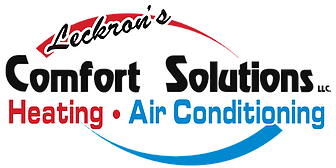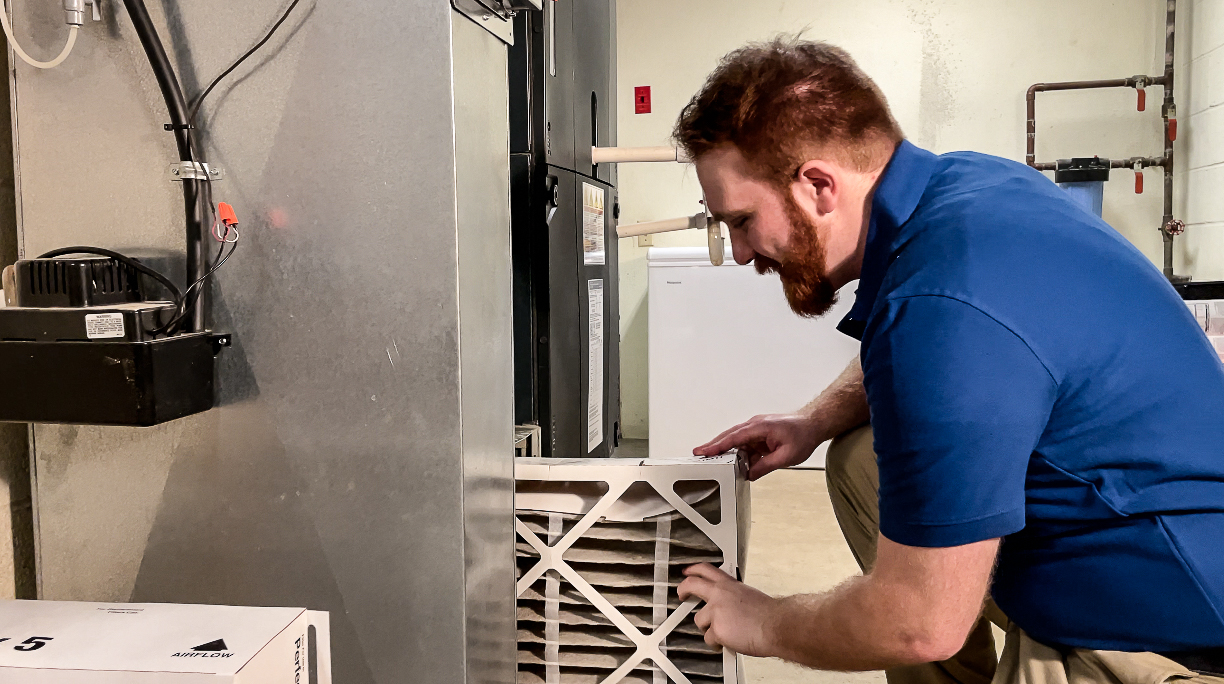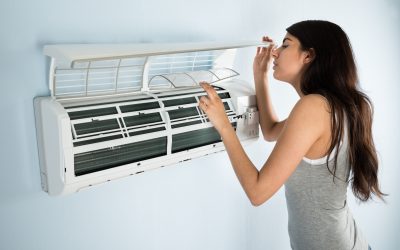Furnaces are the heart of our HVAC system, so it makes sense we spend some time understanding how they work. Do you know the differences between furnace types, what considerations to consider before picking one, how much maintenance they require, and the environmental impacts you must be aware of? This article answers these questions and helps you on your way to understanding the ins and outs of furnaces.
In the simplest terms, a furnace is “an enclosed structure in which heat is produced.” So, in the HVAC system, a furnace is the part of your system that creates the heat. Unlike a heat pump that transfers heat from one location to another, a furnace creates heat and sends it throughout the home, usually through ducts.
As early as 3000 BC, coal was used to heat living spaces. Around 1000 BC, it was discovered that there was a gas that, when burned, could create heat. By 1200 AD, chimneys appeared in living quarters. In 1805, William Strutt invented a warm-air furnace that used ducts, and in 1883, Thomas Edison invented electric heating. From here, the technological developments continued until we have the plethora of options today.
Today’s furnaces are consistently revamped to become more energy efficient and for good purpose. According to the US Department of Energy, “Homes and commercial buildings consume 40% of the energy used in the United States.” The more energy efficient a furnace is, the lower the greenhouse gas emissions, indoor air pollutants, and waste. From a purely economic standpoint, the better efficiency a furnace has, the less the monthly bills.
How Furnaces Work
Furnaces work by warming air and delivering this warmed air to the various rooms through a maze of ducts. The difference in furnaces is how they generate the heat necessary to warm the air.
Combustion-based heating
Furnaces relying on combustion-based heating use air and a fuel source to burn. For combustion to take place, oxygen must be supplied either by a dedicated line drawing in outside air, as in a closed system, or by using the air in the surrounding space, as in an open-air system. Inside the combustion chamber, natural gas, propane, or butane mix with air and a heat source to combust. In oil furnaces, oils are used instead of gas. The now intense heat raises the temperature of the heat exchanger. As air flows across the exchanger, it picks up the heat. The now-warmed air is released into the ductwork and through the home.
Type of fuel for combustion-based furnaces
There are three main types of combustion-based furnaces: natural gas, oil, and propane.
Natural gas
Natural gas is the most common fuel type for furnaces. They heat the homes faster than most furnace options and are less expensive to operate. That said, they may only last up to 20 years, have an extensive installation process, and are at risk of carbon monoxide leaks. When organic materials decompose, they create natural gas, which is processed into a usable form. Because the gas is colorless, odorless, and tasteless, a smell similar to rotten eggs is added so homeowners can identify a gas leak.
Propane
Like natural gas, propane runs hot and creates more heat than electric furnaces. Using tanks allows homeowners who cannot run a natural gas pipeline to their homes to use propane instead. It burns clean and can be used for water heaters. On the downside, propane can be expensive to install and does not burn as hot as oil or natural gas.
Oil
Today’s oil systems are very economical. Oil furnaces tend to be less expensive and can work in areas where gas is unavailable. Oil is stored in a tank, which pumps into the furnace to burn. Most homes use kerosene oil, a cleaner alternative to gas oil. Because of the potential for leaks, oil-burning furnaces must be inspected regularly.
Electric-based heating
With electric furnaces, no flame or combustion is necessary to create heat. Instead, electricity warms up metal coils. When cool air blows overtop of them, the air warms. The warmed air then blows through the ductwork, heating your home.
Components of a furnace
Burner
Thermostats signal gas burners to begin the cycle of creating heat. A flame ignites either by pilot light or electricity, and heat is made by mixing oxygen, gas, and the flame. Single-stage burners have only a single level of flame despite the temperature conditions. Two-stage burners expand the options to high and low output, so milder weather doesn’t pull the same heat as freezing temperatures. Finally, modulating burners can adjust the flame based on the home’s needs.
Heat exchanger
The heat exchanger exchanges heat. Metal tubes heat up to the point that when air passes over them, the heat transfers from the tubes to the air. This air warms the home. Because the initial warmed gasses are inside tubes, no hazardous gasses seep into the house.
Blower
The blower performs the functions its name implies: it blows air. When air enters the return vents, the blower fans push it over the heat exchanger. There are two types of blowers: multi-speed and variable. Multi-speed has three speeds (low, medium, and high), and the furnace is set to one of these speeds during installation. Variable speed blowers are not set at a permanent speed and can be altered depending on flow rates, temperatures, or other factors.
Thermostat
The thermostat is the captain of the ship – it tells our furnace to kick on and start warming the home. With new technology, thermostats are even more advanced, allowing controls to be adjusted with the pattern of the family or vacation schedules.
Efficiency and Performance Factors
If you spend money on a new furnace, make it as efficient as possible. Here’s what to look for when selecting a furnace for your home.
AFUE ratings
Annual Fuel Utilization Efficiency (AFUE) ratings measure how well a furnace can convert a fuel source such as oil or gas into heat. The higher the rating, the more efficient a furnace is at converting the fuel source without loss of heat, or in other words, the smaller amount of wasted fuel.
On the high end, furnaces have an AFUE rating of 90%-98.5%. This rating translates to 90% of the heat is used to heat the home, whereas 10% of the heat escapes through a chimney or another source of heat loss. AFUE ratings do not take into account heat lost through duct systems or piping, despite that this can account for as much as 35% of heat loss in a home if ducts run through areas that are not insulated, such as garages and attics.
Middle-of-the-road efficiency ratings fall between 80%-83%. Anything lower than this is considered low efficiency. Electric furnaces generally have an AFUE rating of 95%-100% due to the lack of flue for heat to escape; however, when selecting a furnace, you must consider the higher cost of heating by electricity.
Factors influencing furnace efficiency (insulation, size, maintenance)
Does your furnace not perform at its stellar rating? Let’s look at some of the common culprits of decreased furnace performance.
The model
The most obvious way to decrease the efficiency is to purchase a make and model with poor ratings. Even though a model is on sale or is new to your home, it doesn’t mean it is up to the challenge of energy efficiency. Talk with your technician about the most efficient model in the price range you are willing to pay.
The size
When selecting a model, its size must be appropriate for your home. Furnaces that are too small or too large are inefficient, wasting energy to heat space that isn’t actually available or by working overtime because it was designed for a smaller square footage. Leckron’s technicians can guide you to the models that match your home’s needs.
The install
Believe it or not, how you install your furnace impacts its efficiency and even puts you at risk of unknown gas leaks. At a minimum, many manufacturers will void a warranty if a trained professional does not install it.
The maintenance
Not servicing your furnace comes at a cost. Because minor problems snowball over time, improperly maintained furnaces often wear out sooner. Furthermore, your manufacturer may void your warranty if you do not keep up with routine maintenance. Leckron’s Comfort Solutions offers affordable plans, so all you have to do is schedule the day, and we will take care of the rest.
The air quality
The indoor air quality impacts the functioning of your furnace. The filter will clog faster if your unit constantly cleans the air of mold, dirt, debris, and allergens. When this happens, your system must push air through the unit harder. More work equals lower efficiency.
The air flow
Closing vents in unused rooms seems helpful, but your ductwork is designed to keep a particular air flow ratio in your home. When you start tinkering with this flow, your system must work harder to heat areas of the house that would have benefited from a warmer adjacent room. Help efficiency by keeping doors and vents open.
Energy-saving features and modern advancements in furnace technology
Decades have likely passed since the last time you thought about a furnace. Since then, technological advancements have progressed the furnace options from simply gas or electric to selections that save you money.
Smart technology and furnaces
With smart thermostat technology tying into your furnace, homeowners can adjust their furnace with a tap of an app. Various modes, such as vacation or work-week modes, allow your system to adjust when people are not home.
Furthermore, smart furnaces alert homeowners and your HVAC company about detected issues. While once a leak may go completely undetected, some models can automatically send an alert to the homeowner if a function goes astray. Technicians monitor and diagnose issues with the HVAC system before even stepping into your home, saving time and labor costs.
Finally, smart technology allows homeowners to keep tabs on electricity use, monitoring and comparing usage to previous months or similar times of the year.
AI meets furnaces
As we begin to understand how AI can help our everyday lives, furnace companies are exploring their range of possibilities. Currently, AI is used to study the habits of the home’s occupants, sending signals to adjust the furnace according to the daily patterns and energy use.
Carbon footprint
HVAC companies and furnace manufacturers are constantly pursuing ways to improve our carbon footprint. Renewable energy sources such as solar or geothermal are being explored and expanded to heat homes without oil or gas. Today’s air-sourced heat pumps work in temperatures as low as 15 below, extending the areas that can rely on warmth from a greener furnace option.
Reduce energy loss and consumption
Scientists and engineers are currently working to combat the problem of heat loss. The goal is to work advanced materials into furnaces and HVAC systems to save energy by decreasing the amount of heat that escapes.
Considerations Before Choosing a Furnace
There are numerous factors to consider when picking the furnace for your home. Home size, occupancy, habits of the members, pets, location, eco-friendly solutions, installation needs, operational and maintenance expenses, tax rebates, incentives, and capability with current heating systems and smart options all impact which furnace is best suited for your home.
Luckily, our professionals have you covered. Leckron’s Comfort Solution is versed in evaluating your particular situation. When we come for a walkthrough, we will leave you with options based on your unique situation. There is no reason to spend hours researching and fighting overwhelm – we have you covered.
Installation and Maintenance
With furnaces, especially those dealing with the ability to leak gas into your home, you need the 4-1-1 on installation and maintenance.
Professional installation vs. DIY considerations
Can you or should you is the question. Could you DIY your furnace installation? Maybe, but you leave your family open to the risk of incorrect installation. A flawed gas furnace installation means the gas could leak inside the home, putting your family at risk of carbon monoxide poisoning. If you tie your furnace to a faulty electrical line, you risk blowing a fuse or sparking an electrical fire. On a very minor scale, most warranties will be void if a professional does not install your furnace. Stick to DIY your drywall repair and leave furnace installation to the professionals.
Maintenance tips for optimal performance and safety
Optimize your HVAC efficiency with simple maintenance tips. From changing the filter to cleaning around your unit, a few hours every season change can help extend the life of your purchase. Check out Leckron’s Essential Guide to HVAC Furnace Maintenance to keep your system well-maintained all year.
Troubleshooting furnace issues versus seeking professional help
It’s helpful to know the difference between an “I can take care of that” and a “we need to call in the big guns.” Anything dealing with gas or oil leaks requires the hand of a professional. If it is something like changing a furnace filter, tackle that bad boy on your own. For a detailed list of how to troubleshoot your furnace and when to call for help, check out our October article on troubleshooting your HVAC system.
Environmental Impact and Regulations
When evaluating which type of furnace to install, it is hard to ignore the environmental impact of each type. Furthermore, there are tax incentives and rebates for homeowners to try to make their household more environmentally friendly. With worldwide goals to reduce our carbon imprint, now is the time to switch to a greener option.
Furnaces and carbon footprint
Depending on the type of furnace you choose to install, you can reduce your carbon footprint or add to the growing concern of emissions. Gas and oil-fueled furnaces have a high carbon footprint. Switching to an electric heat pump significantly reduces household pollution. The concerns with fossil fuels used to generate electricity are valid; however, given that more options are available to purchase your electricity from renewable sources such as solar or wind, this nuance is also decreasing naturally.
Government regulations and energy efficiency standards
Knowing gas furnaces emit greenhouse gasses, the government has been working to update standards that haven’t been touched since the early 2000’s. As of late 2023, new standards were passed to begin in late 2028. These standards state that non-weatherized gas furnaces and those in mobile homes must be 95% efficient. The result of this bill? Consumers are expected to save billions on energy bills over the course of 30 years.
Incentives and rebates for installing energy-efficient furnaces
EnergyStar is the go-to for tax rebates from the government for energy-efficient furnace upgrades. With a worldwide focus on decreasing our dependence on fossil fuels and lowering carbon emissions, the US incentivizes homeowners who make these upgrades with tax breaks and rebates. As manufacturers constantly change and release new rebates and offers, consult with Leckron’s technicians on the most current rebates available.
Warm Up this Winter
Your unique situation determines the type of heating options available to you. Whether gas, oil, electric, or a heat pump, finding the most appropriate energy-efficient furnace saves you in the long run. With rebates and incentives, Leckron’s is here to make your needs a reality.
I received a flyer in the mail from Lekron’s and we were in need of a new heat pump. I called and was able to make an appointment that week. A tech and a sales person came onsite, listened to our issues and then did a site survey on our setup. They found a potential reason for our one issue and then discussed our options. We decided to purchase a new Trane heat pump and chose their financing option. They were up front with the costs, no hidden fees or extra things added on. The technicians were prompt and stayed on task on a hot day. They were professional and courteous. We certainly noticed a difference right away with our new unit and after a month have been very pleased with it. I didn’t shop around to compare prices but they were very comparable with pricing we had gotten a year earlier and had better customer service. I recommend Leckron’s for anyone looking for service or installation of a heat pump! ~ Cameron D., customer
Technology will only continue to grow, with more smart device options and inner connectedness options. Find out how you can take control of your monthly bills, decrease your carbon footprint, and keep your family warm all at the same time. Contact Leckron’s today!




